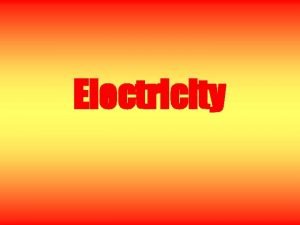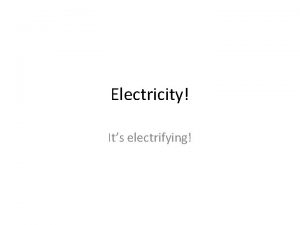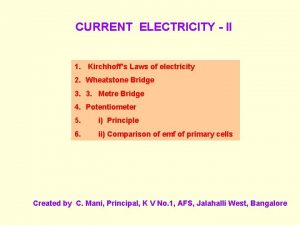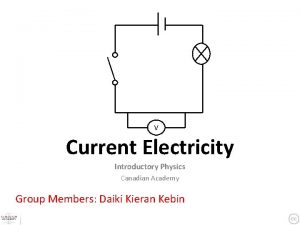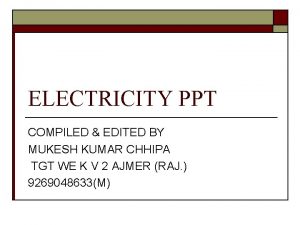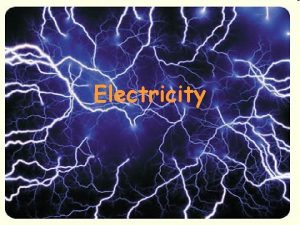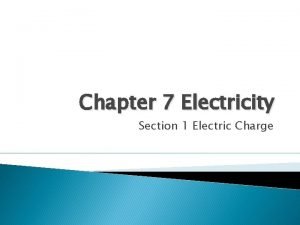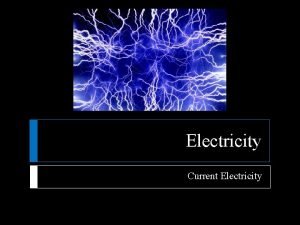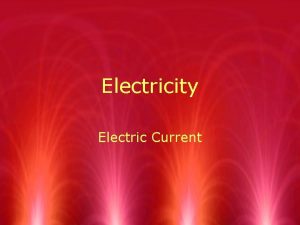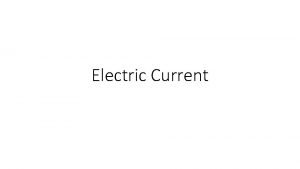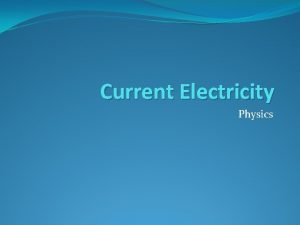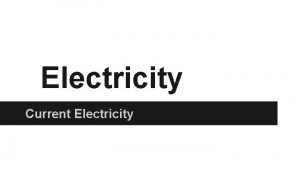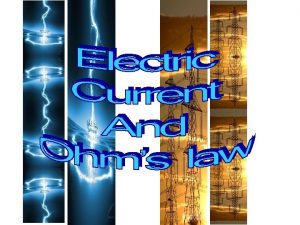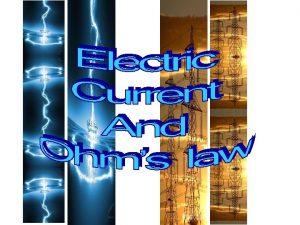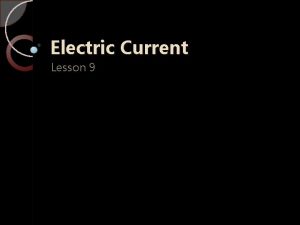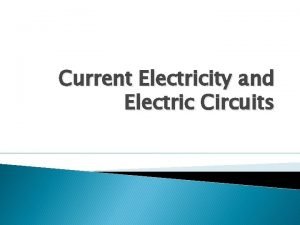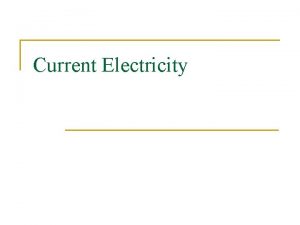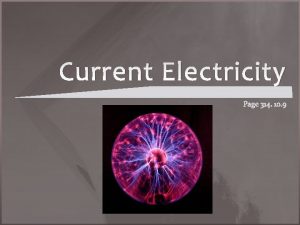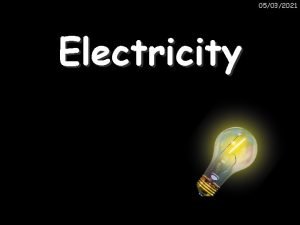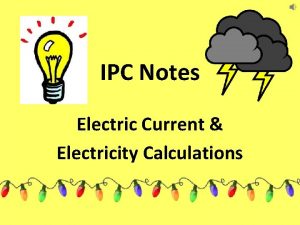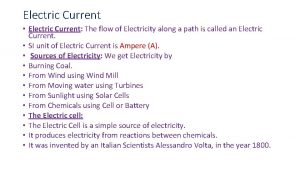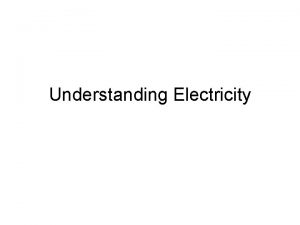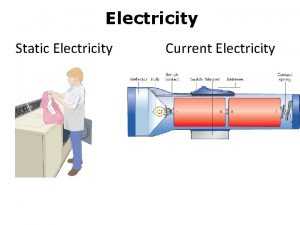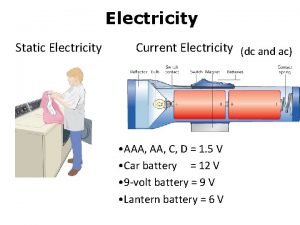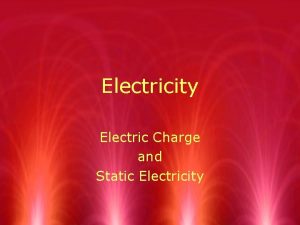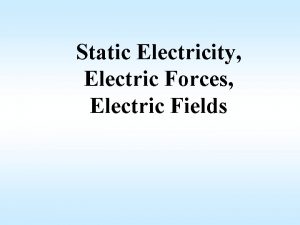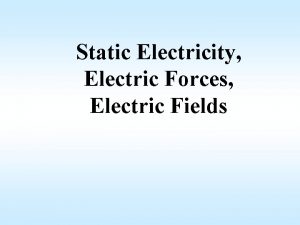Electricity Part 2 Electric Current Electric current is























- Slides: 23

Electricity Part 2: Electric Current

Electric current is the amount of charge moving past a point

Definition of current I = current Q = amount of charge that passes point. t = time for charge to pass by.

Units of Current 1 Ampere (Amp) = 1 Coulomb/second

Electric currents only flow in wires. 1. True 2. False

Examples of Currents Solar wind interacting with the earths magnetic field

1) Coronal Mass Ejection 2) Aurora from space 3) Aurora from ground CME animation Aurora from space Aurora effects

Examples of Currents Lightning https: //www. youtube. com/watch? v=1 Pg 6 JQgj. Kn. I

3 electron beams in a color TV

Tokamak Fusion Experiments JET discharge

We usually think of currents in wires Opening switch

Simple circuit When a charged particle passes through the battery, it gains energy. When the particle passes through the light bulb it gives up the energy as heat. Battery doesn’t supply charges

Ohm’s Law V=IR V= Voltage of the Battery. I=current in circuit. R=Resistance in the bulb/resistor. (Depends on materials and geometry. )

Units of Resistance R=V/I (volts/amps) By definition, 1 Ohm = 1 volt/amp, or 1 =1 V/A.

Log Ride Analogy

Water circuit analogy

Example problem How many amps of current would flow in a light bulb that has a resistance of 60 if it is connected to a 12 V battery.

Power in a circuit When Charge Q passes through the battery it gains an amount of energy E=( Q)V (This is the amount of work the battery does on the charge. )

If the charge takes an amount of time t to pass through the battery, the battery supplies a power of (does work at a rate of)

The power supplied by the battery must be dissipated in the resistor. We also know the V=IR. Power dissipated in resistor

Which type of light bulb has a larger resistance, a 100 W bulb or a 60 W bulb? 1. The 100 W bulb 2. The 60 W bulb 3. They will have the same resistance 4. None of the above

Example Calculation What is the resistance and how much current flows through a 100 W bulb? Note: The wattage on a bulb is its power output and assumes that you will use it in the US where the voltage in 110 V.

Redo the calculations for a 60 W bulb
 Static electricity and current electricity
Static electricity and current electricity Current electricity
Current electricity Magnetism vocabulary
Magnetism vocabulary Kinds of electric
Kinds of electric Electrons flowing
Electrons flowing Electricity def
Electricity def Bill nye electricity
Bill nye electricity Current electricity
Current electricity What is current electricity in physics
What is current electricity in physics Current electricity ppt
Current electricity ppt Venn diagram of reflection and refraction
Venn diagram of reflection and refraction Chapter 6 section 1 electric charge worksheet answers
Chapter 6 section 1 electric charge worksheet answers Electricity section 1 electric charge
Electricity section 1 electric charge Electricity section 1 electric charge
Electricity section 1 electric charge Line current and phase current
Line current and phase current Phase to phase voltage
Phase to phase voltage N=nc exp(-eg/2kt)
N=nc exp(-eg/2kt) Lesson 4 three-phase motors
Lesson 4 three-phase motors Drift current and diffusion current in semiconductor
Drift current and diffusion current in semiconductor Ceramic composition resistors
Ceramic composition resistors Drain current in the constant-current region increases when
Drain current in the constant-current region increases when In a delta connected source feeding a y connected load
In a delta connected source feeding a y connected load Holding current and latching current
Holding current and latching current Diffusion current density
Diffusion current density



